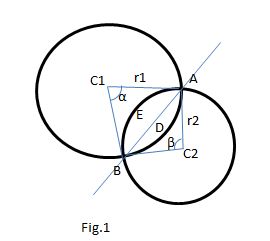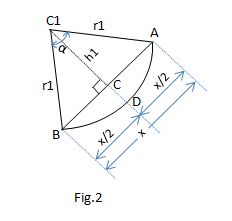How do you calculate the overlapping area between intersecting circles?
1 Answer
Calculate the area of the circular sector, from which subtract the area of the triangles whose base is the circles' chord defined by the intersection points; finally sum the results.
Explanation:
Consider Figs. 1 and 2


Figure 1 shows two circles (with centers
The area of interest is encompassed by arcs ADB and AEB.
In such a problem, most probably
We only need one more information to determine the area of the region ADBE: the proportion of any of the areas of circular sector to the total area of its circle or the angle of the circular sector (
If we have the coordinates of the center points C1 and C2 as well as the radii
If we get the chord AB (called "x" in Figure 2 ) we can obtain
Knowing
Next we can easily find
Then with the chord AB (
Next we need just to subtract from each circular sector the area of its triangle.
Finally, we sum the results of the aforementioned subtractions obtaining the area of interest. Job done!
OR we could integrate the area between the equations of the two circles from the point A (

